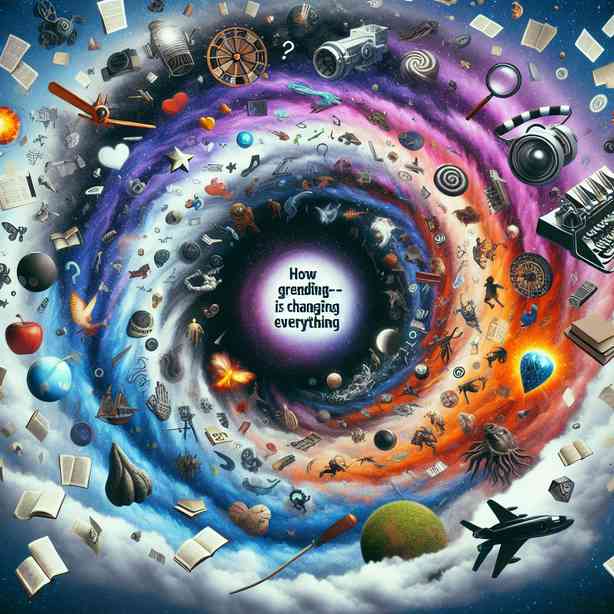
Genre-blending, the innovative practice of merging elements from different artistic genres, has been transforming the cultural landscape, weaving together diverse narratives and styles. This phenomenon is not limited to music, literature, and film; it has permeated into almost every form of creative expression, creating a rich tapestry of artistic experiences. By breaking down the boundaries that once defined rigid genres, artists are now able to explore new terrains, offering audiences more intricate stories and emotions.
Firstly, understanding genre-blending involves acknowledging the historical context of artistic genres. Traditionally, genres served as templates that guided creators and audiences alike—think of the clear distinctions between horror, romance, or science fiction genres. These categorizations provided a framework within which artists could express their ideas, and audiences could find comfort in familiarity. However, this began to change with the advent of postmodernism in the late 20th century, which encouraged deconstruction and playfulness with established forms. The rigid classifications that once existed became less significant, paving the way for genre-blending to flourish.
In music, genre-blending is perhaps most vividly seen in the rise of hybrid forms. Artists like Billie Eilish and Lil Nas X have redefined what it means to be a musician in the 21st century. Billie, with her ethereal vocals mixed with elements of pop, hip-hop, and electronica, creates sounds that challenge traditional pop structures. Similarly, Lil Nas X’s “Old Town Road” blended country and hip-hop, igniting a conversation about authenticity and genre boundaries. This blending not only speaks to the versatility of contemporary artists but also reflects cultural shifts and the increasingly interconnected global landscape.
Moreover, genre-blending is significantly impacting the world of literature. Authors such as Neil Gaiman and Margaret Atwood have garnered critical acclaim for their ability to weave elements of fantasy with philosophical inquiries or dystopian themes. Gaiman’s works often mix mythological references with modern-day settings, while Atwood uses speculative fiction to explore real-world issues such as gender and environmental crisis. This blend allows for a narration that resonates with diverse reader experiences, inviting them into complex worlds that mirror the multifaceted nature of human life.
Film, too, is experiencing a renaissance through genre-blending. The Marvel Cinematic Universe exemplifies this phenomenon exceptionally well. Each film combines elements of action, drama, comedy, and even horror, catering to a broad spectrum of viewers. This ability to merge styles not only enhances the storytelling but also allows for deep character development, as seen in films like “Thor: Ragnarok,” which combines humor and action in ways that redefine expectations for superhero films. Audiences are not merely passive observers; they are engaged in a dialogue with the film, as they experience a wide range of emotions and themes.
However, the impact of genre-blending extends beyond artistic expression; it also influences cultural and social frameworks. By challenging traditional norms, genre-blending encourages inclusivity and broader representation in the arts. It allows marginalized voices—those who have been historically excluded from mainstream narratives—to find space within popular culture. For instance, the blending of traditionally Western genres with African narratives in films like “Black Panther” has opened avenues for diverse storytelling, highlighting cultural richness and diversity, while also allowing audiences to engage with stories that might not fit neatly into pre-existing categories.
The educational landscape is also adapting to the rise of genre-blending, as educators recognize the value of interdisciplinary approaches. By integrating literature, music, and visual arts, educators can foster creative thinking and critical analysis among students. Assignments that encourage students to blend genres can lead to innovative projects, encouraging them to break free from the constraints of traditional academic formats. This paradigm shift in education promotes collaboration and creative expression, preparing students for a future where adaptability and innovation are key drivers of success.
Furthermore, the impact of technology cannot be overlooked in the realm of genre-blending. The internet and digital platforms provide a space for artists to experiment with new forms and distribute their work globally. Platforms such as TikTok and SoundCloud enable creators to blend genres in real-time, receiving feedback and gaining popularity much faster than ever before. This instant connection fosters a collaborative environment, allowing diverse voices to coexist, share their unique experiences, and inspire one another.
However, the blending of genres does pose challenges. As the lines between categories blur, there is a risk of oversaturation in the market. Audiences may find themselves overwhelmed by the sheer volume of content available, making it difficult to discern quality or meaning. Furthermore, the commercialization of genre-blending may lead to an emphasis on marketability over authenticity, potentially diluting the artistic integrity of some works. Balancing innovation with quality becomes a crucial conversation within the artistic community and among audiences alike.
In conclusion, genre-blending represents a dynamic shift in the landscape of art and culture, reshaping how stories are told and experienced. By melding different genres, artists are dismantling barriers, inviting a more inclusive dialogue that resonates with the complexities of modern life. Whether through music, literature, film, or education, genre-blending is forging new paths of creativity, challenging traditional norms and fostering a sense of belonging for diverse voices. As we continue to navigate this evolving landscape, understanding the significance and implications of genre-blending will be essential for both creators and audiences, as we engage with the art that reflects our shared experiences and aspirations.


